Type I gamma phosphatidylinositol phosphate kinase is required for EGF-stimulated directional cell migration
- PMID: 17635937
- PMCID: PMC2064448
- DOI: 10.1083/jcb.200701078
Type I gamma phosphatidylinositol phosphate kinase is required for EGF-stimulated directional cell migration
Abstract
Phosphatidylinositol 4,5-bisphosphate (PI4,5P(2)) modulates a plethora of cytoskeletal interactions that control the dynamics of actin assembly and, ultimately, cell migration. We show that the type Igamma phosphatidylinositol phosphate kinase 661 (PIPKIgamma661), an enzyme that generates PI4,5P(2), is required for growth factor but not G protein-coupled receptor-stimulated directional migration. By generating PI4,5P(2) and regulating talin assembly, PIPKIgamma661 modulates nascent adhesion formation at the leading edge to facilitate cell migration. The epidermal growth factor (EGF) receptor directly phosphorylates PIPKIgamma661 at tyrosine 634, and this event is required for EGF-induced migration. This phosphorylation regulates the interaction between PIPKIgamma661 and phospholipase Cgamma1 (PLCgamma1, an enzyme previously shown to be involved in the regulation of EGF-stimulated migration). Our results suggest that phosphorylation events regulating specific PIPKIgamma661 interactions are required for growth factor-induced migration. These interactions in turn define the spatial and temporal generation of PI4,5P(2) and derived messengers required for directional migration.
Figures
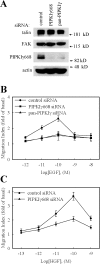

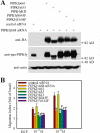
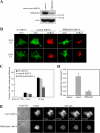
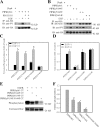
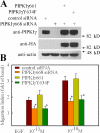
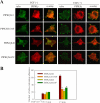
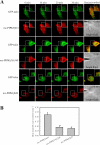
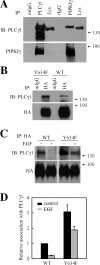
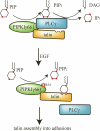
Similar articles
-
Phosphorylation of phosphatidylinositol 4-phosphate 5-kinase γ by Akt regulates its interaction with talin and focal adhesion dynamics.Biochim Biophys Acta. 2015 Oct;1853(10 Pt A):2432-43. doi: 10.1016/j.bbamcr.2015.07.001. Epub 2015 Jul 4. Biochim Biophys Acta. 2015. PMID: 26149501
-
Tyrosine phosphorylation of type Igamma phosphatidylinositol phosphate kinase by Src regulates an integrin-talin switch.J Cell Biol. 2003 Dec 22;163(6):1339-49. doi: 10.1083/jcb.200310067. J Cell Biol. 2003. PMID: 14691141 Free PMC article.
-
Epidermal growth factor stimulates phospholipase cgamma1 in cultured rabbit corneal epithelial cells.Exp Eye Res. 2000 Mar;70(3):261-9. doi: 10.1006/exer.1999.0783. Exp Eye Res. 2000. PMID: 10712812
-
Phosphatidylinositol phosphate kinases put PI4,5P(2) in its place.J Membr Biol. 2003 Jul 15;194(2):77-89. doi: 10.1007/s00232-003-2027-7. J Membr Biol. 2003. PMID: 14502432 Review.
-
PIP kinases define PI4,5P₂signaling specificity by association with effectors.Biochim Biophys Acta. 2015 Jun;1851(6):711-23. doi: 10.1016/j.bbalip.2015.01.009. Epub 2015 Jan 21. Biochim Biophys Acta. 2015. PMID: 25617736 Free PMC article. Review.
Cited by
-
Type I γ Phosphatidylinositol Phosphate 5-Kinase i5 Controls the Ubiquitination and Degradation of the Tumor Suppressor Mitogen-inducible Gene 6.J Biol Chem. 2016 Oct 7;291(41):21461-21473. doi: 10.1074/jbc.M116.736041. Epub 2016 Aug 24. J Biol Chem. 2016. PMID: 27557663 Free PMC article.
-
Phosphoinositides Signaling and Epithelial-to-Mesenchymal Transition: Putative Topic for Basic Toxicological Research.Toxicol Res. 2008 Mar;24(1):1-9. doi: 10.5487/TR.2008.24.1.001. Epub 2008 Mar 1. Toxicol Res. 2008. PMID: 32038770 Free PMC article. Review.
-
Abnormally increased DNA methylation in chorionic tissue might play an important role in development of ectopic pregnancy.Reprod Biol Endocrinol. 2021 Jul 2;19(1):101. doi: 10.1186/s12958-021-00785-2. Reprod Biol Endocrinol. 2021. PMID: 34215268 Free PMC article.
-
The FERM domain: organizing the structure and function of FAK.Nat Rev Mol Cell Biol. 2010 Nov;11(11):802-14. doi: 10.1038/nrm2996. Nat Rev Mol Cell Biol. 2010. PMID: 20966971 Review.
-
Phosphoinositide signaling regulates the exocyst complex and polarized integrin trafficking in directionally migrating cells.Dev Cell. 2012 Jan 17;22(1):116-30. doi: 10.1016/j.devcel.2011.10.030. Dev Cell. 2012. PMID: 22264730 Free PMC article.
References
-
- Anderson, R.A., and V.T. Marchesi. 1985. Regulation of the association of membrane skeletal protein 4.1 with glycophorin by a polyphosphoinositide. Nature. 318:295–298. - PubMed
-
- Anderson, R.A., I.V. Boronenkov, S.D. Doughman, J. Kunz, and J.C. Loijens. 1999. Phosphatidylinositol phosphate kinases, a multifaceted family of signaling enzymes. J. Biol. Chem. 274:9907–9910. - PubMed
-
- Bairstow, S.F., K. Ling, X. Su, A.J. Firestone, C. Carbonara, and R.A. Anderson. 2006. Type Igamma661 phosphatidylinositol phosphate kinase directly interacts with AP2 and regulates endocytosis. J. Biol. Chem. 281:20632–20642. - PubMed
-
- Borm, B., R.P. Requardt, V. Herzog, and G. Kirfel. 2005. Membrane ruffles in cell migration: indicators of inefficient lamellipodia adhesion and compartments of actin filament reorganization. Exp. Cell Res. 302:83–95. - PubMed
Publication types
MeSH terms
Substances
Grants and funding
LinkOut - more resources
Full Text Sources
Other Literature Sources
Molecular Biology Databases
Miscellaneous

